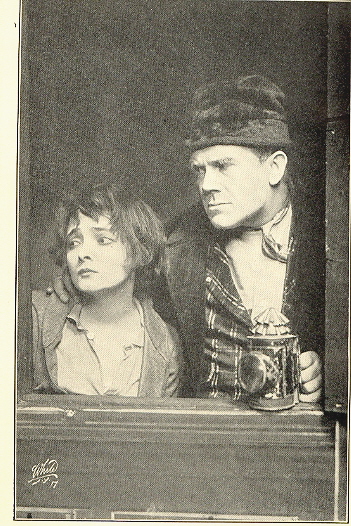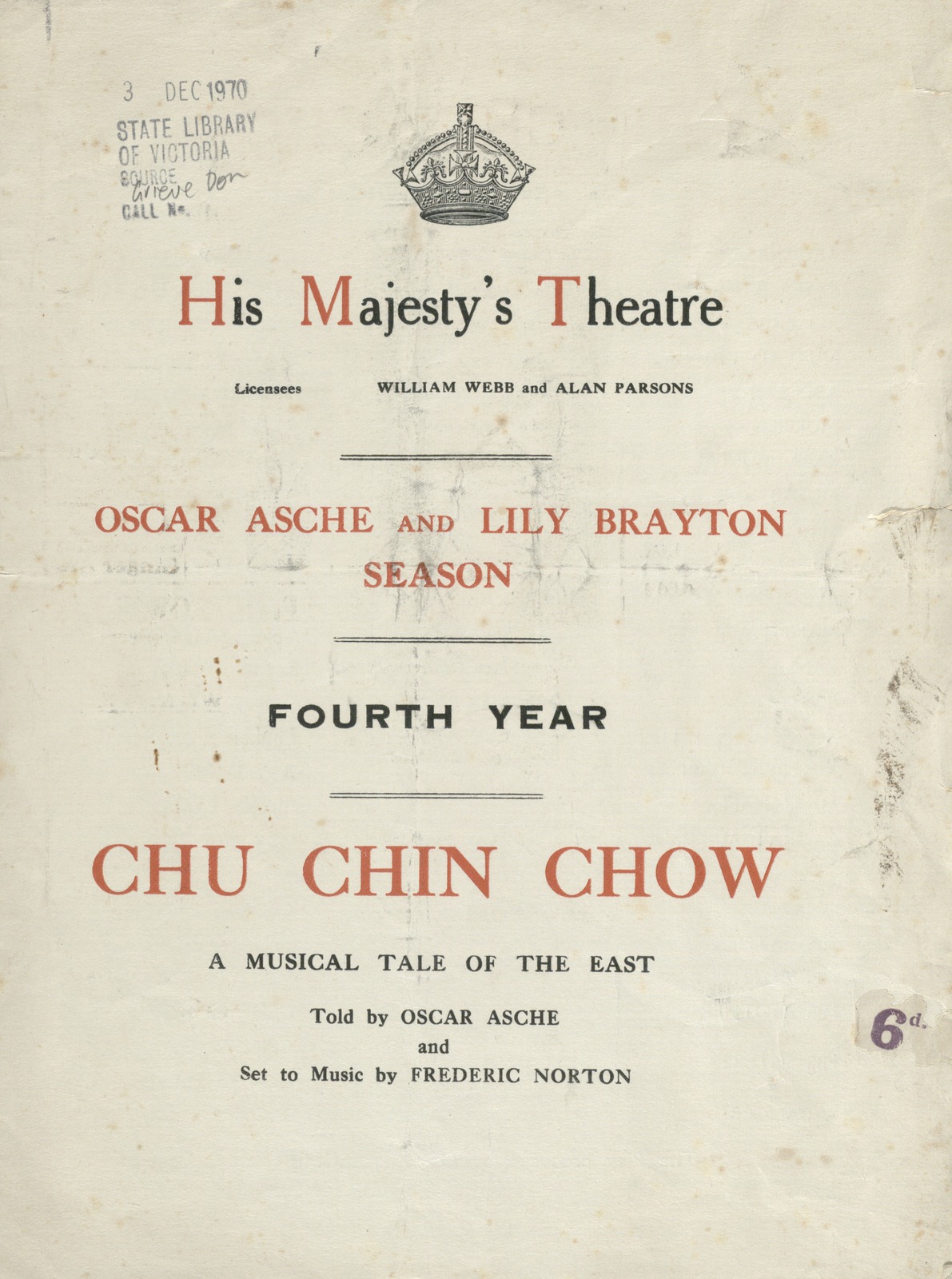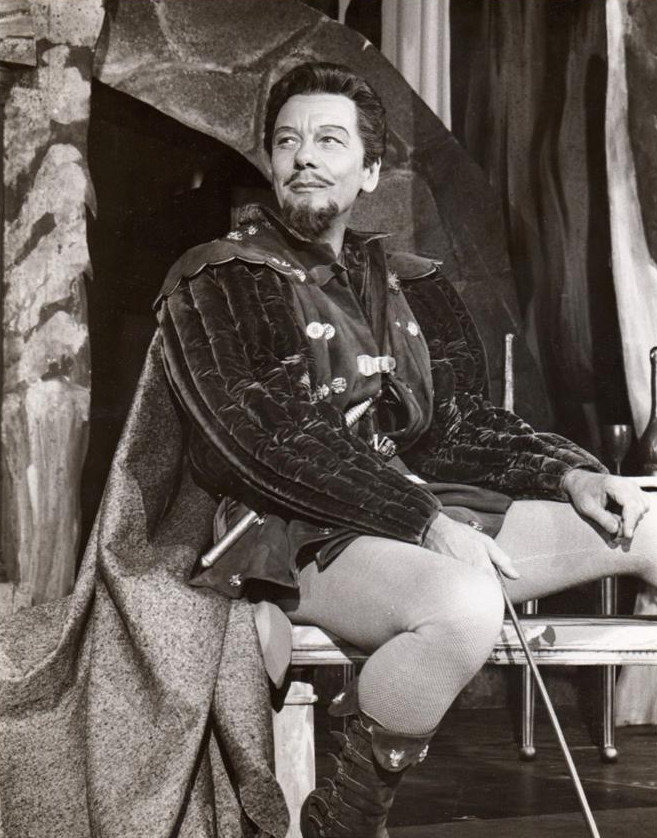|
Lyn Harding
David Llewellyn Harding (12 October 1867 – 26 December 1952), known professionally as Lyn Harding, was a Welsh actor who spent 40 years on the stage before entering British made silent films, talkies and radio. He had an imposing and menacing stage presence and came to be cast as the villain in many films, notably Professor Moriarty in dramatisations of the Sherlock Holmes stories. Early years He was born in 1867 at St. Brides Wentloog, in Monmouthshire, into a strict Congregationalist Welsh-speaking family. Acting career He started his career as an apprentice draper in Newport, Wales and but he was drawn to an acting career. He began giving readings from Shakespeare at a chapel in Cardiff. In 1890 a chance meeting with a touring group on a train led to him standing in for a sick actor and his first professional engagement. He opened on 28 August 1890 in ''The Grip Of Iron'' at the Theatre Royal, Bristol. He toured "the provinces" and eventually made his London debut ... [...More Info...] [...Related Items...] OR: [Wikipedia] [Google] [Baidu] |
Monmouthshire (historic)
, Status= Historic countyCeremonial county (until 1974)Administrative county (1889–1974) , Start= 1535 , Origin= Laws in Wales Act 1535 , Motto= Faithful to both (Utrique Fidelis) , Image= Flag adopted in 2011 , Map= , HQ= Monmouth and Newport , Replace= Gwent, Mid Glamorgan, South Glamorgan , Arms= ''Coat of arms of Monmouthshire County Council'' , Government= Monmouthshire County Council (1889–1974)Newport County Borough Council (1891–1974)Cardiff County Borough Council (part) (1938–1974) , Code= MON , CodeName= Chapman code , PopulationFirst= 98,130Vision of Britain �1831 Census/ref> , PopulationFirstYear= 1831 , AreaFirst= , AreaFirstYear= 1831 , DensityFirst= 0.3/acre , DensityFirstYear= 1831 , PopulationSecond= 230 ... [...More Info...] [...Related Items...] OR: [Wikipedia] [Google] [Baidu] |
Clapham
Clapham () is a suburb in south west London, England, lying mostly within the London Borough of Lambeth, but with some areas (most notably Clapham Common) extending into the neighbouring London Borough of Wandsworth. History Early history The present day Clapham High Street is on the route of a Roman road. The road is recorded on a Roman monumental stone found nearby. According to its inscription, the stone was erected by a man named Vitus Ticinius Ascanius. It is estimated to date from the 1st century. (The stone was discovered during building works at Clapham Common South Side in 1912. It is now placed by the entrance of the former Clapham Library, in the Old Town.) According to the history of the Clapham family, maintained by the College of Heralds, in 965 King Edgar of England gave a grant of land at Clapham to Jonas, son of the Duke of Lorraine, and Jonas was thenceforth known as Jonas "de fClapham". The family remained in possession of the land until Jonas's great- ... [...More Info...] [...Related Items...] OR: [Wikipedia] [Google] [Baidu] |
Leverstock Green
Leverstock Green is a suburb in Hemel Hempstead, in the English county of Hertfordshire. It is located on the eastern edge of the town. Leverstock Green has a school, Leverstock Green Church of England Primary School, cricket club, tennis club, football club ( Leverstock Green FC), village hall, shops, pubs and Holy Trinity church. Despite its recent amalgamation with Hemel Hempstead, the old names remain in memory of historical times. Leverstock Green is a "modern" parish, formed about 1849 from parts of the parishes of St Michael's ( St Albans), Abbots Langley Abbots Langley is a large village and civil parish in the English county of Hertfordshire. It is an old settlement and is mentioned (under the name of Langelai) in the Domesday Book. Economically the village is closely linked to Watford and was ... and Hemel Hempstead. There is documentary and archaeological evidence that people lived and worked in the immediate area of Leverstock Green from the time of the Roman ... [...More Info...] [...Related Items...] OR: [Wikipedia] [Google] [Baidu] |
Henry IV, Part 1
''Henry IV, Part 1'' (often written as ''1 Henry IV'') is a history play by William Shakespeare, believed to have been written no later than 1597. The play dramatises part of the reign of King Henry IV of England, beginning with the battle at Homildon Hill late in 1402, and ending with King Henry's victory in the Battle of Shrewsbury in mid-1403. In parallel to the political conflict between King Henry and a rebellious faction of nobles, the play depicts the escapades of King Henry's son, Prince Hal (the future King Henry V), and his eventual return to court and favour. ''Henry IV, Part 1'' is the first of Shakespeare's two plays which deal with the reign of Henry IV (the other being '' Henry IV, Part 2''), and the second play in the Henriad, a modern designation for the tetralogy of plays that deal with the successive reigns of Richard II, Henry IV, and Henry V. From its first performance on, it has been an extremely popular work both with the public and critics. Characte ... [...More Info...] [...Related Items...] OR: [Wikipedia] [Google] [Baidu] |
Owain Glyndŵr
Owain ap Gruffydd (), commonly known as Owain Glyndŵr or Glyn Dŵr (, anglicised as Owen Glendower), was a Welsh leader, soldier and military commander who led a 15 year long Welsh War of Independence with the aim of ending English rule in Wales during the Late Middle Ages. He was also an educated lawyer, he formed the first Welsh Parliament ( cy, Senedd Cymru), and was the last native-born Welshman to hold the title Prince of Wales. Owain Glyndŵr was a direct descendant of several Welsh royal dynasties including the princes of Powys via the House of Mathrafal through his father Gruffudd Fychan II, hereditary Prince ( cy, Tywysog) of Powys Fadog. And through his mother, Elen ferch Tomas ap Llywelyn, he was also a descendant of the kings and princes of the Kingdom of Deheubarth as well as the royal House of Dinefwr, and the kings and princes of the Kingdom of Gwynedd and their cadet branch of the House of Aberffraw. The rebellion began in 1400, when Owain Glyndŵr, a descende ... [...More Info...] [...Related Items...] OR: [Wikipedia] [Google] [Baidu] |
West End Theatre
West End theatre is mainstream professional theatre staged in the large theatres in and near the West End of London.Christopher Innes, "West End" in ''The Cambridge Guide to Theatre'' (Cambridge: Cambridge University Press, 1998), pp. 1194–1195, Along with New York City's Broadway theatre, West End theatre is usually considered to represent the highest level of commercial theatre in the English-speaking world. Seeing a West End show is a common tourist activity in London. Famous screen actors, British and international alike, frequently appear on the London stage. There are a total of 39 theatres in the West End, with the Theatre Royal, Drury Lane, opened in May 1663, the oldest theatre in London. The Savoy Theatre – built as a showcase for the popular series of comic operas of Gilbert and Sullivan – was entirely lit by electricity in 1881. Opening in October 2022, @sohoplace is the first new West End theatre in 50 years. The Society of London Theatre (SOLT) announced ... [...More Info...] [...Related Items...] OR: [Wikipedia] [Google] [Baidu] |
Chu Chin Chow
''Chu Chin Chow'' is a musical comedy written, produced and directed by Oscar Asche, with music by Frederic Norton, based (with minor embellishments) on the story of ''Ali Baba and the 40 Thieves''. Gänzl, Kurt"''Chu Chin Chow'' Musical Tale of the East In 3 Acts, Music by Frederic Norton" Operetta Research Center, 9 July 2016 The piece premièred at His Majesty's Theatre in London on 3 August 1916 and ran for five years and a total of 2,238 performances (more than twice as many as any previous musical), a record that stood for nearly forty years until ''Salad Days''. The show's first American production in New York, with additional lyrics by Arthur Anderson, played for 208 performances in 1917–1918, starring Tyrone Power."Chu Chin Chow (1934): A Robust Operetta ... [...More Info...] [...Related Items...] OR: [Wikipedia] [Google] [Baidu] |
Anthony Quayle
Sir John Anthony Quayle (7 September 1913 – 20 October 1989) was a British actor and theatre director. He was nominated for an Oscar and a Golden Globe for his supporting role as Thomas Wolsey in the film ''Anne of the Thousand Days'' (1969). He also played important roles in such major studio productions as '' The Guns of Navarone'' (1961), ''Lawrence of Arabia'' (1962), '' The Fall of the Roman Empire'' (1964), ''Operation Crossbow'' (1965), ''QB VII'' (1974) and '' The Eagle Has Landed'' (1976). Quayle was knighted in the 1985 New Years Honours List. Early life Quayle was born at 2, Delamere Road, Ainsdale, Southport, Lancashire, to solicitor Arthur Quayle, of a Manx family, and Esther Kate, née Overton. He was educated at the private Abberley Hall School and Rugby School and trained at the Royal Academy of Dramatic Art (RADA) in London. After appearing in music hall, he joined the Old Vic in 1932. During World War II, he was a British Army officer and was made one of t ... [...More Info...] [...Related Items...] OR: [Wikipedia] [Google] [Baidu] |
Ralph Richardson
Sir Ralph David Richardson (19 December 1902 – 10 October 1983) was an English actor who, with John Gielgud and Laurence Olivier, was one of the trinity of male actors who dominated the British stage for much of the 20th century. He worked in films throughout most of his career, and played more than sixty cinema roles. From an artistic but not theatrical background, Richardson had no thought of a stage career until a production of ''Hamlet'' in Brighton inspired him to become an actor. He learned his craft in the 1920s with a touring company and later the Birmingham Repertory Theatre. In 1931 he joined the Old Vic, playing mostly Shakespearean roles. He led the company the following season, succeeding Gielgud, who had taught him much about stage technique. After he left the company, a series of leading roles took him to stardom in the West End and on Broadway. In the 1940s, together with Olivier and John Burrell, Richardson was the co-director of the Old Vic company. ... [...More Info...] [...Related Items...] OR: [Wikipedia] [Google] [Baidu] |
John Gielgud
Sir Arthur John Gielgud, (; 14 April 1904 – 21 May 2000) was an English actor and theatre director whose career spanned eight decades. With Ralph Richardson and Laurence Olivier, he was one of the trinity of actors who dominated the British stage for much of the 20th century. A member of the Terry family theatrical dynasty, he gained his first paid acting work as a junior member of his cousin Phyllis Neilson-Terry's company in 1922. After studying at the Royal Academy of Dramatic Art he worked in repertory theatre and in the West End theatre, West End before establishing himself at the Old Vic as an exponent of William Shakespeare, Shakespeare in 1929–31. During the 1930s Gielgud was a stage star in the West End and on Broadway theatre, Broadway, appearing in new works and classics. He began a parallel career as a director, and set up his own company at the Sondheim Theatre, Queen's Theatre, London. He was regarded by many as the finest Prince Hamlet, Hamlet of his era, ... [...More Info...] [...Related Items...] OR: [Wikipedia] [Google] [Baidu] |
Burma
Myanmar, ; UK pronunciations: US pronunciations incl. . Note: Wikipedia's IPA conventions require indicating /r/ even in British English although only some British English speakers pronounce r at the end of syllables. As John Wells explains, the English spellings of both Myanmar and Burma assume a non-rhotic variety of English, in which the letter r before a consonant or finally serves merely to indicate a long vowel: �mjænmɑː, ˈbɜːmə So the pronunciation of the last syllable of Myanmar as ɑːror of Burma as ɜːrməby some speakers in the UK and most speakers in North America is in fact a spelling pronunciation based on a misunderstanding of non-rhotic spelling conventions. The final ''r'' in ''Myanmar'' was not intended for pronunciation and is there to ensure that the final a is pronounced with the broad ''ah'' () in "father". If the Burmese name my, မြန်မာ, label=none were spelled "Myanma" in English, this would be pronounced at the end by all ... [...More Info...] [...Related Items...] OR: [Wikipedia] [Google] [Baidu] |
Harper (publisher)
Harper is an American publishing house, the flagship imprint of global publisher HarperCollins based in New York City. History J. & J. Harper (1817–1833) James Harper and his brother John, printers by training, started their book publishing business J. & J. Harper in New York City in 1817. Their two brothers, Joseph Wesley and Fletcher, joined them in the mid-1820s. Harper & Brothers (1833–1962) The company changed its name to "Harper & Brothers" in 1833. The headquarters of the publishing house were located at 331 Pearl Street, facing Franklin Square in Lower Manhattan (about where the Manhattan approach to the Brooklyn Bridge lies today). Harper & Brothers began publishing ''Harper's New Monthly Magazine'' in New York City in 1850. The brothers also published ''Harper's Weekly'' (starting in New York City in June 1857), '' Harper's Bazar'' (starting in New York City in November 2, 1867), and ''Harper's Young People'' (starting in New York City in 1879). George B. ... [...More Info...] [...Related Items...] OR: [Wikipedia] [Google] [Baidu] |




.jpg)



.jpg)